A Shrouded Wind Turbine Generating High Output Power with Wind-lens Technology
Abstract
:1. Introduction
2. Development of a Collection-Acceleration Device for Wind (Diffuser Shroud Equipped with a Brim, Called “Wind-Lens”)
2.1. Selection of a Diffuser-Type Structure as the Basic Form
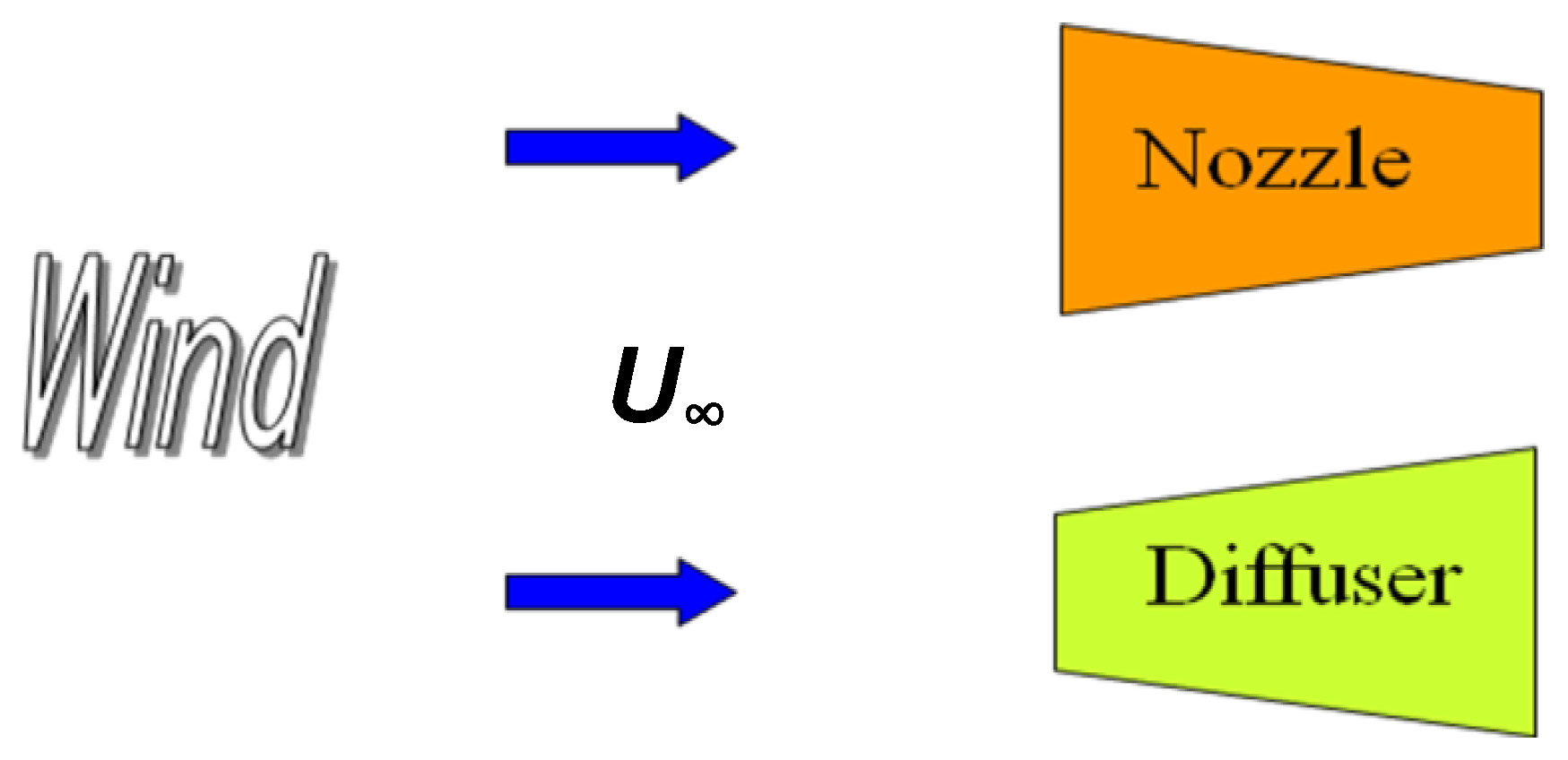

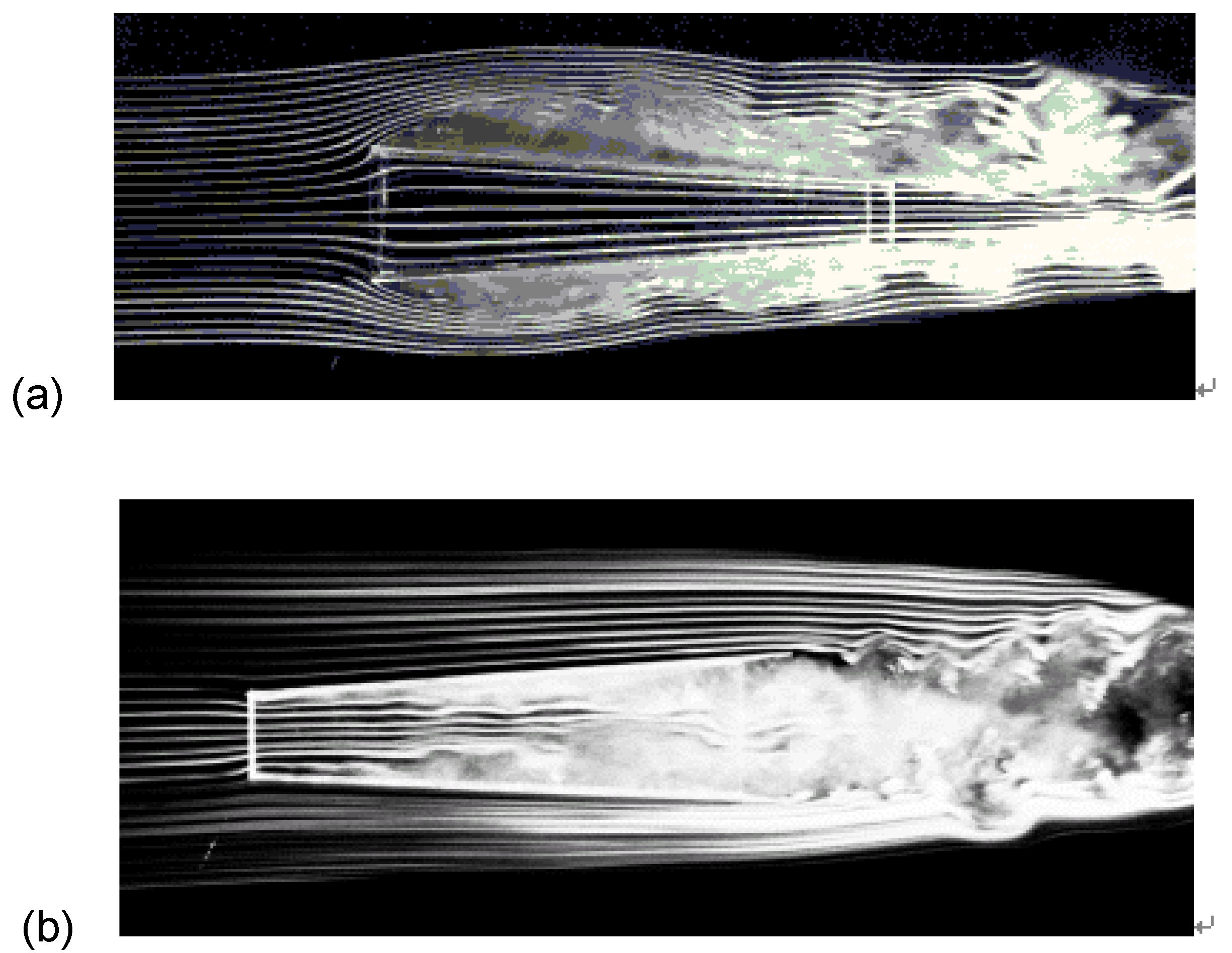
2.2. Idea of a Ring-Type Plate Which Forms Vortices (It is called “Brim”)
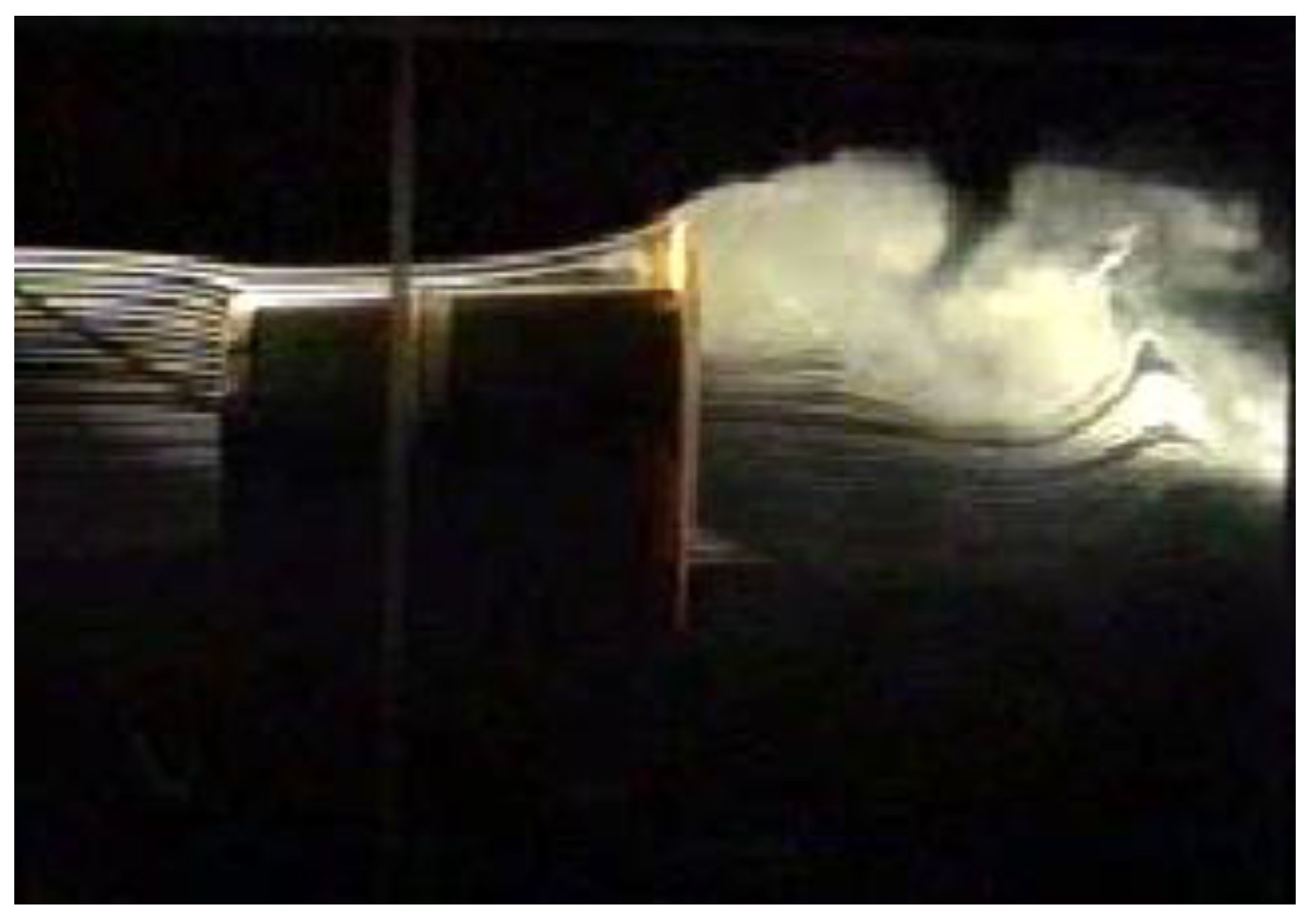

2.3. Characteristics of a Wind Turbine with Brimmed Diffuser Shroud
- (1)
- Four-fivefold increase in output power compared to conventional wind turbines due to concentration of the wind energy (“wind-lens” technology).
- (2)
- Brim-based yaw control: The brim at the exit of the diffuser makes wind turbines equipped with a brimmed diffuser rotate following the change in the wind direction, like a weathercock. As a result, the wind turbine automatically turns to face the wind.
- (3)
- Significant reduction in wind turbine noise: Basically, an airfoil section of the turbine blade, which gives the best performance in a low-tip speed ratio range, is chosen. Since the vortices generated from the blade tips are considerably suppressed through the interference with the boundary layer within the diffuser shroud, the aerodynamic noise is reduced substantially [14].
- (4)
- Improved safety: The wind turbine, rotating at a high speed, is shrouded by a structure and is also safe against damage from broken blades.
- (5)
- As for demerits, wind load to a wind turbine and structural weight are increased.


3. Development of a Shrouded Wind Turbine with Compact Brimmed Diffuser
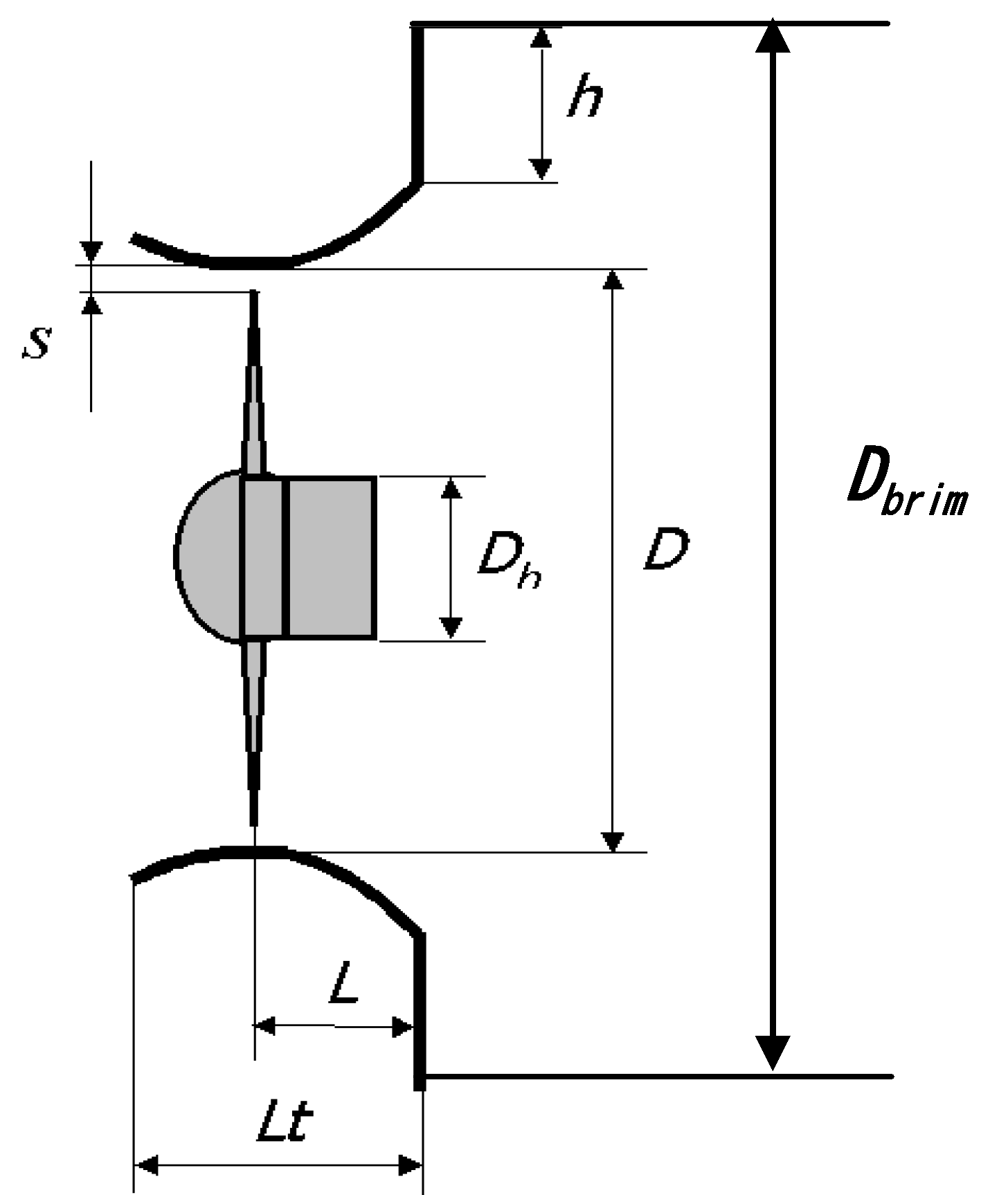
3.1. Experimental Method in Output Performance Test of Compact Wind-Lens Turbines
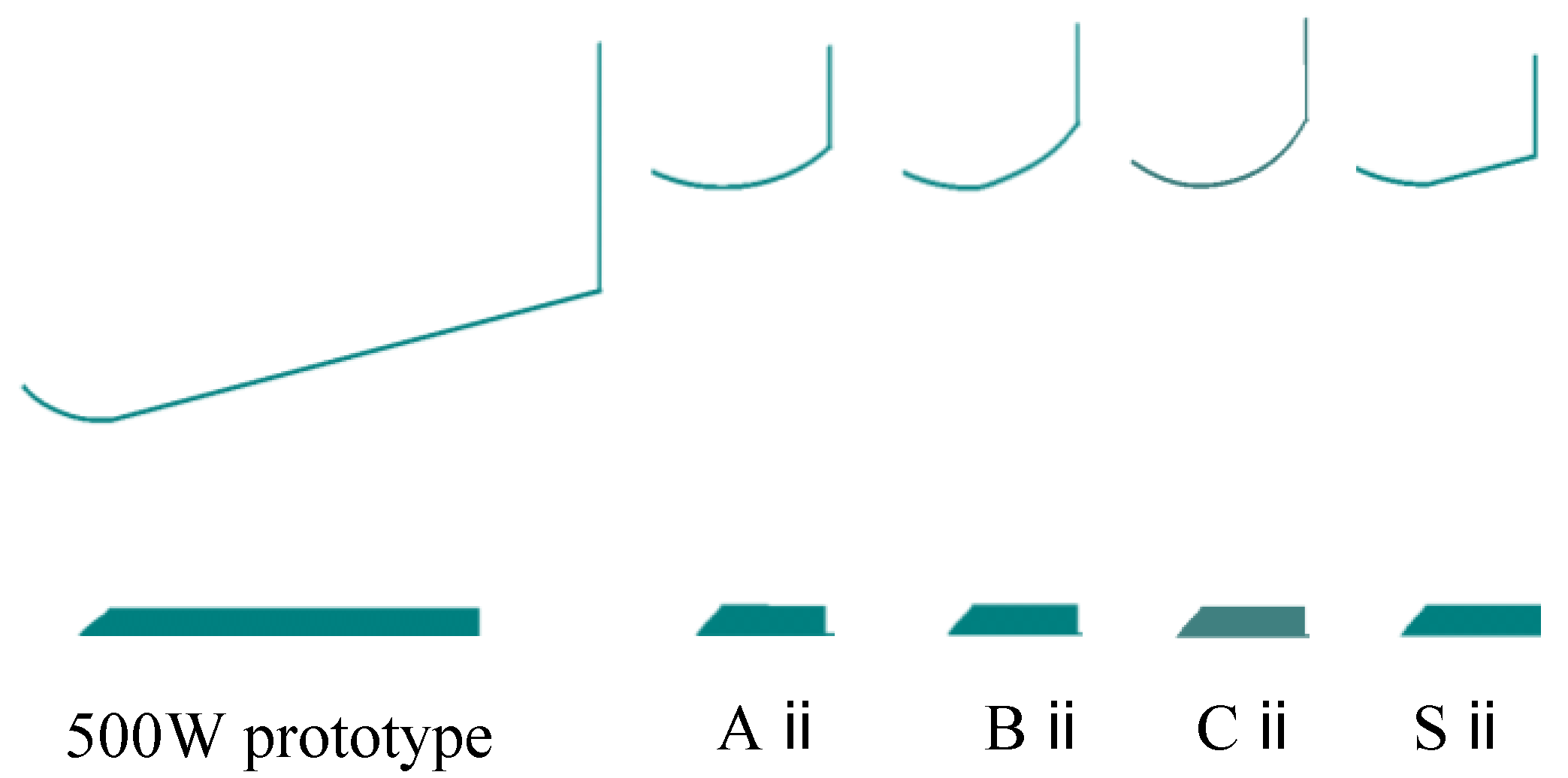
| Diffuser | Prototype | Aⅱ | Bⅱ | Cⅱ | Sⅱ |
|---|---|---|---|---|---|
| Lt/D | 1.470 | 0.225 | 0.221 | 0.221 | 0.225 |
| μ | 2.345 | 1.173 | 1.288 | 1.294 | 1.119 |

3.2. Selection of Compact Brimmed Diffuser Shape as Wind-Lens
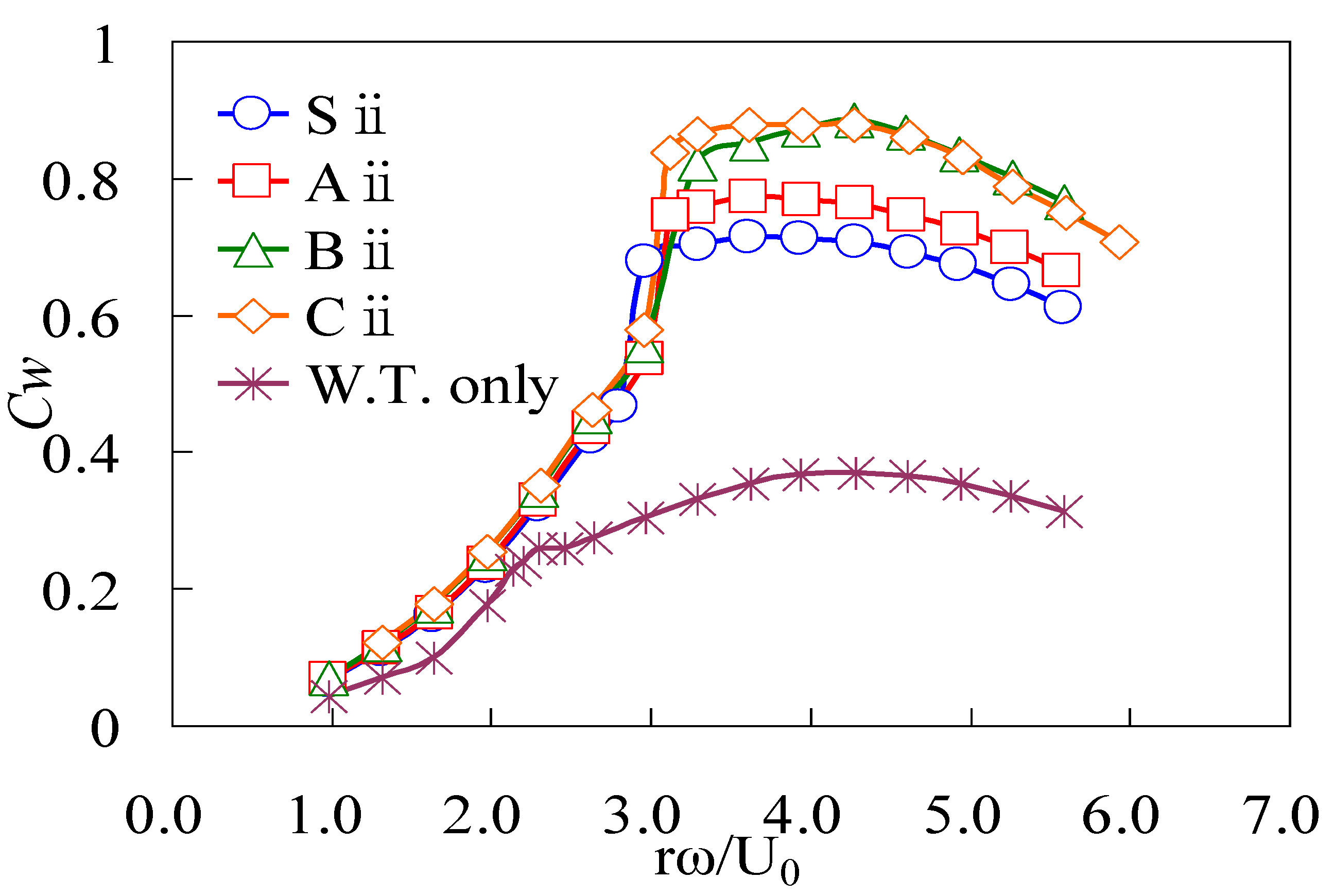
3.3. Output Power of Wind-Lens Turbine with the Compact Diffuser Length
| Diffuser | C0 | Cⅰ | Cⅱ | Cⅲ |
|---|---|---|---|---|
| Lt/D | 0.1 | 0.137 | 0.221 | 0.371 |
| μ | 1.138 | 1.193 | 1.294 | 1.555 |
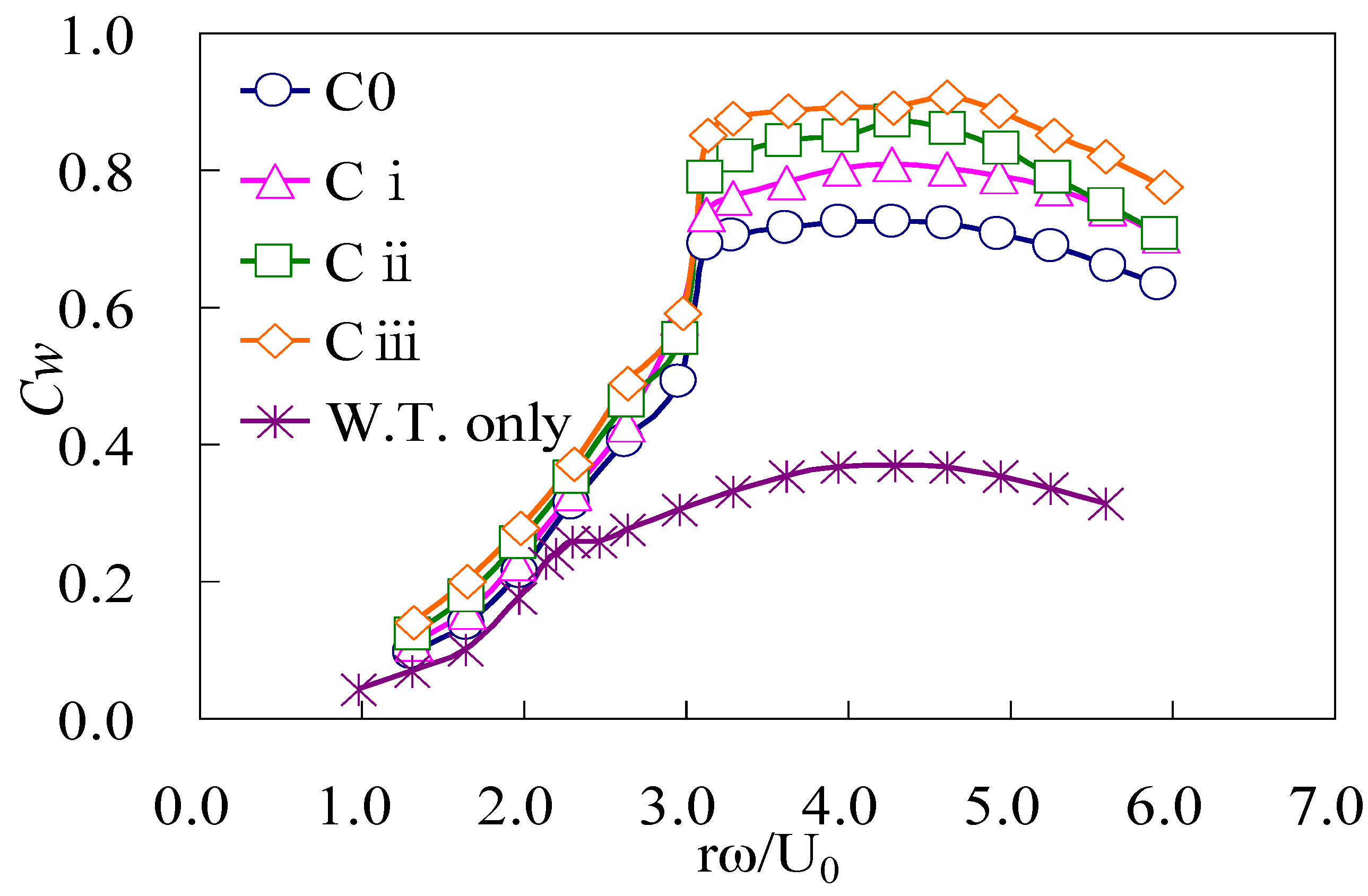

3.4. Field Experiment
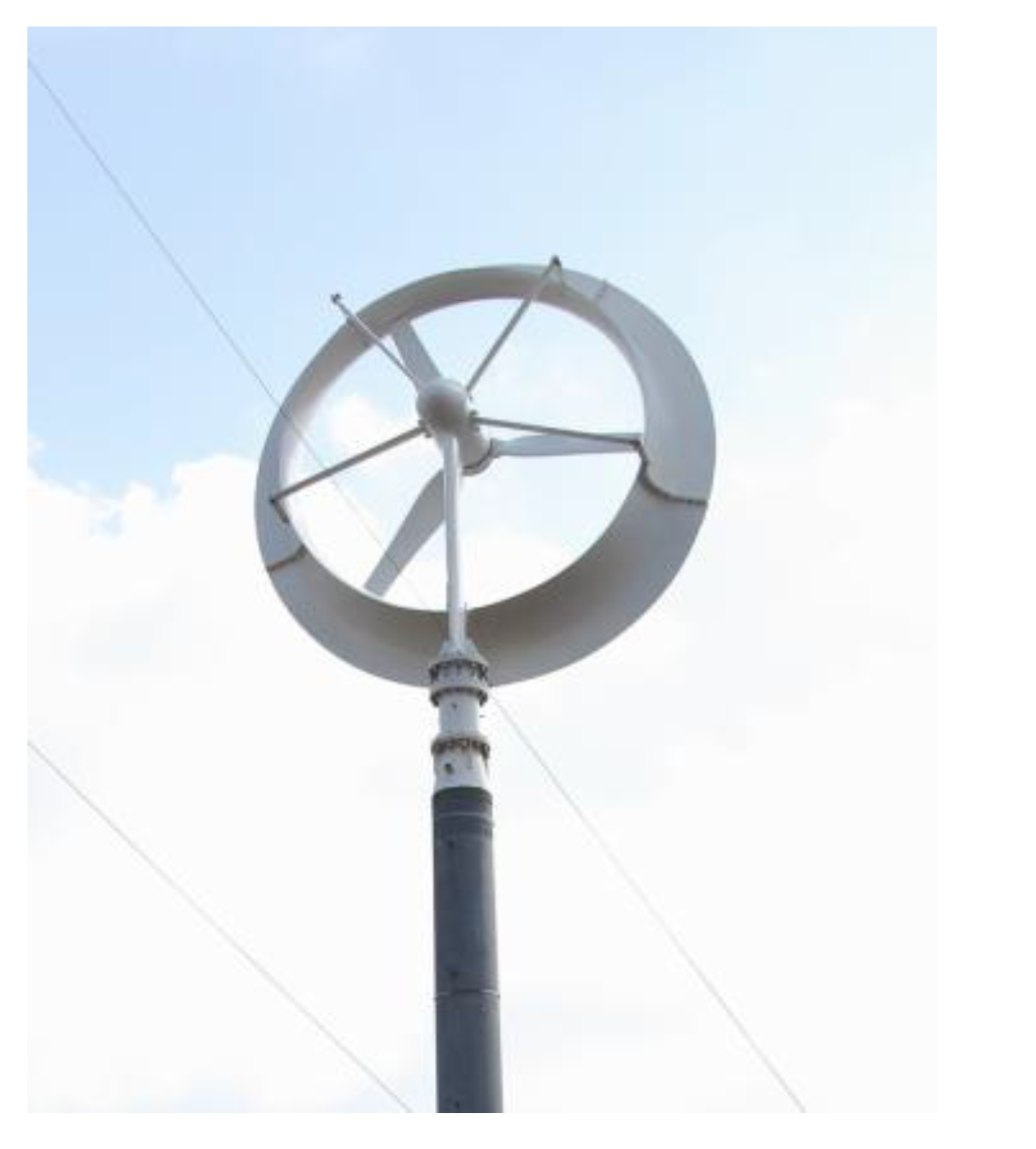
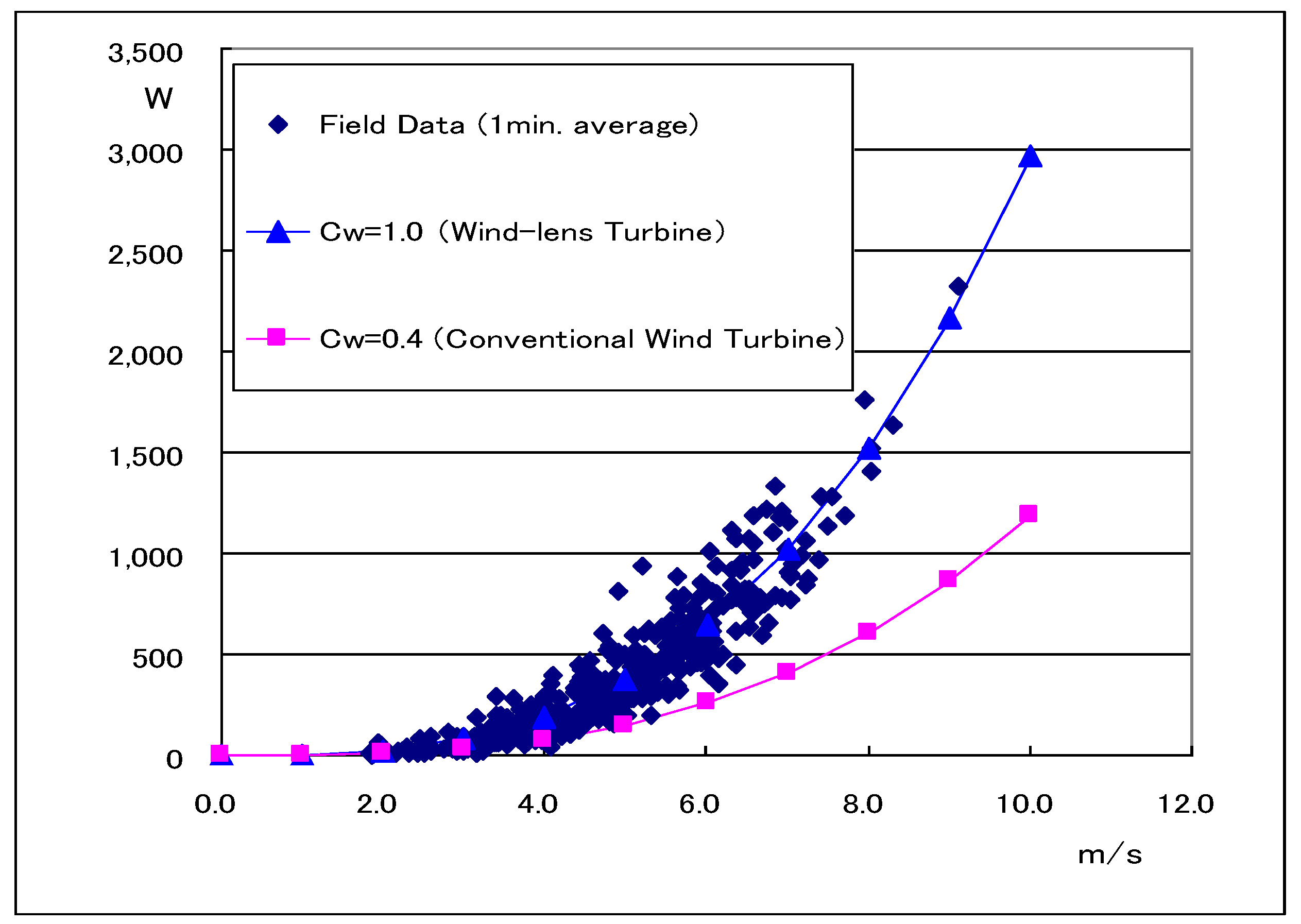
4. Application of 5 kW Wind-Lens Turbines for Supplying Stable Electricity to an Irrigation Plant in China

5. Efficient Utilization of Wind Energy on the Seashore in an Urban City
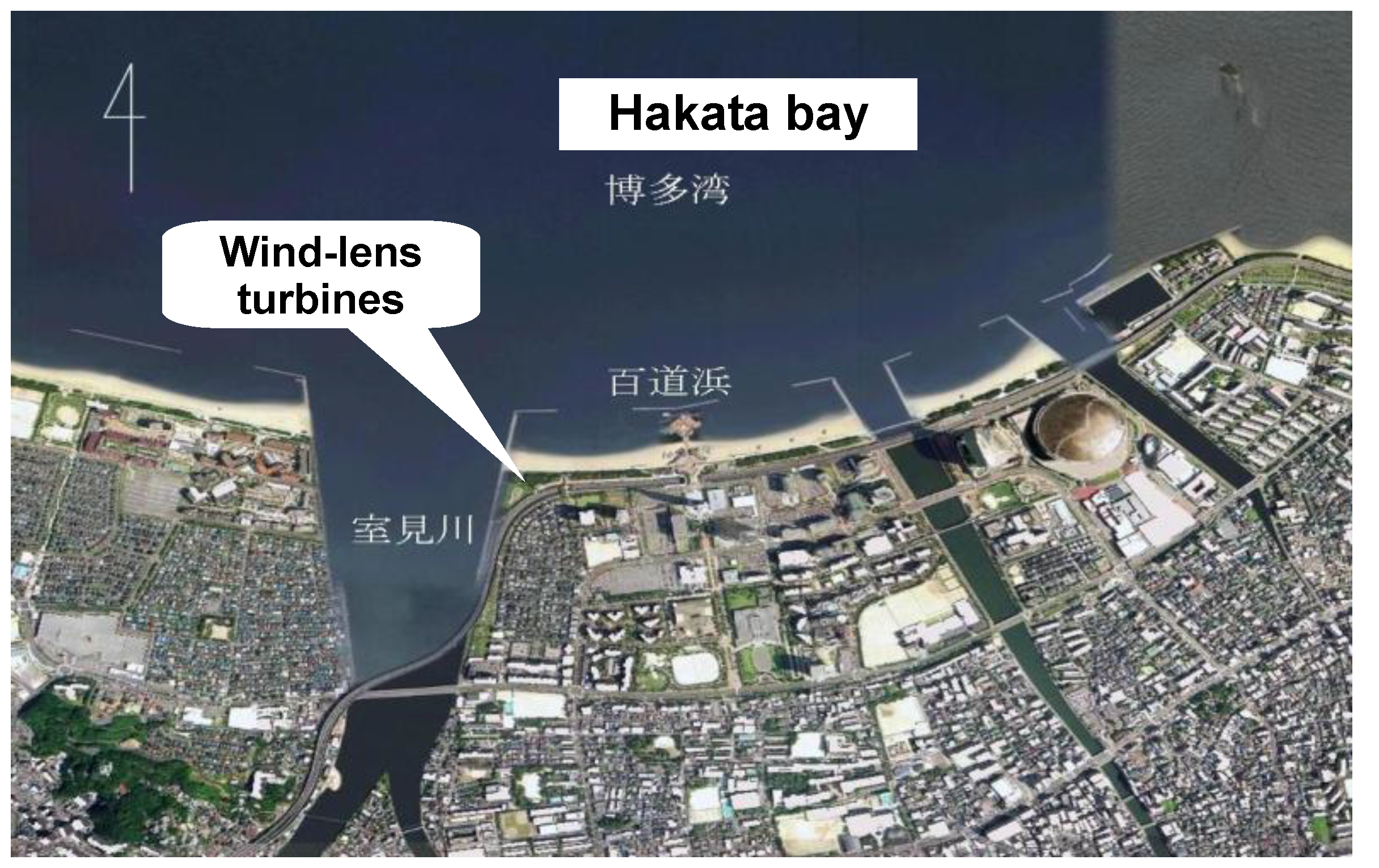
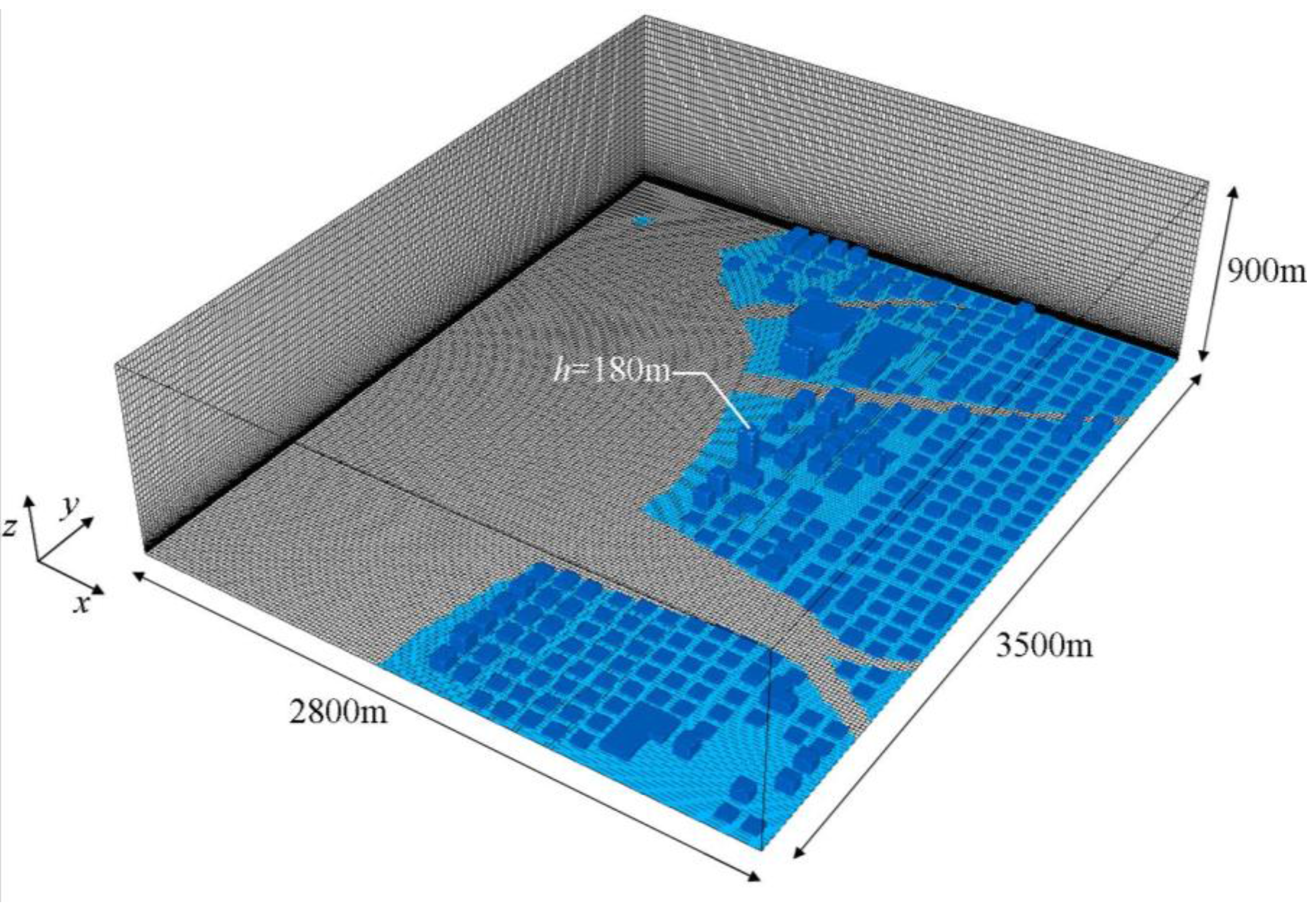
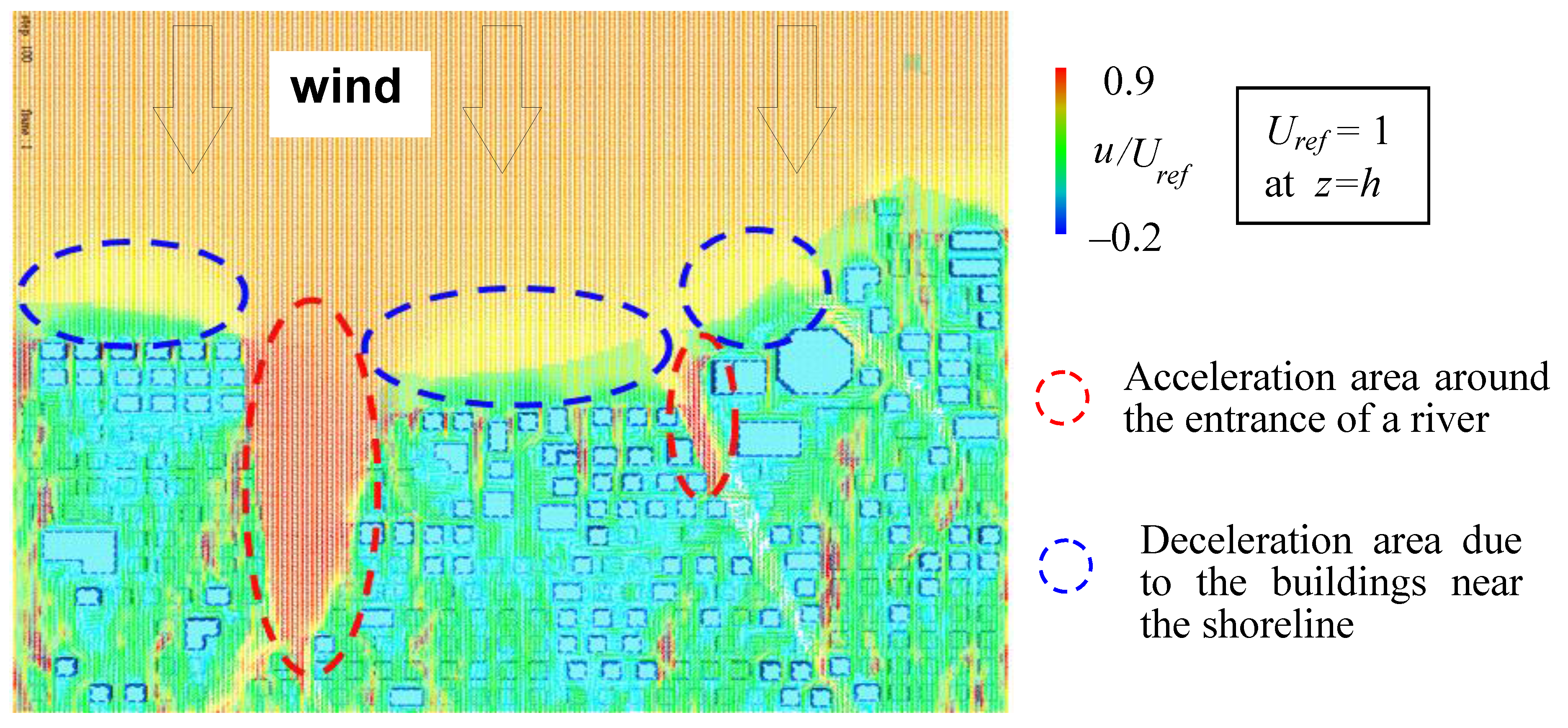

6. Conclusions
Acknowledgements
References
- Lilley, G.M.; Rainbird, W.J. A Preliminary Report on the Design and Performance of Ducted Windmills; Report No. 102; College of Aeronautics: Cranfield, UK, 1956. [Google Scholar]
- Gilbert, B.L.; Oman, R.A.; Foreman, K.M. Fluid dynamics of diffuser-augmented wind turbines. J. Energy 1978, 2, 368–374. [Google Scholar] [CrossRef]
- Gilbert, B.L.; Foreman, K.M. Experiments with a diffuser-augmented model wind turbine. Trans. ASME, J. Energy Resour. Technol. 1983, 105, 46–53. [Google Scholar] [CrossRef]
- Igra, O. Research and development for shrouded wind turbines. Energ. Conv. Manage. 1981, 21, 13–48. [Google Scholar] [CrossRef]
- Phillips, D.G.; Richards, P.J.; Flay, R.G.J. CFD modelling and the development of the diffuser augmented wind turbine. In Proceedings of the Comp. Wind Engineer, Birmingham, UK, 2000; pp. 189–192.
- Phillips, D.G.; Flay, R.G.J.; Nash, T.A. Aerodynamic analysis and monitoring of the Vortec 7 diffuser augmented wind turbine. IPENZ Trans. 1999, 26, 3–19. [Google Scholar]
- Bet, F.; Grassmann, H. Upgrading conventional wind turbines. Renew. Energy 2003, 28, 71–78. [Google Scholar] [CrossRef]
- Ohya, Y.; Karasudani, T.; Sakurai, A. Development of high-performance wind turbine with a brimmed diffuser. J. Japan Soc. Aeronaut. Space Sci. 2002, 50, 477–482. (in Japanese). [Google Scholar]
- Ohya, Y.; Karasudani, T.; Sakurai, A. Development of high-performance wind turbine with a brimmed diffuser, Part 2. J. Japan Soc. Aeronaut. Space Sci. 2004, 52, 210–213. (in Japanese). [Google Scholar]
- Ohya, Y.; Karasudani, T.; Sakurai, A.; Abe, K.; Inoue, M. Development of a shrouded wind turbine with a flanged diffuser. J. Wind Eng. Ind. Aerodyn. 2008, 96, 524–539. [Google Scholar] [CrossRef]
- Abe, K.; Ohya, Y. An investigation of flow fields around flanged diffusers using CFD. J. Wind Eng. Ind. Aerodyn. 2004, 92, 315–330. [Google Scholar] [CrossRef]
- Abe, K.; Nishida, M.; Sakurai, A.; Ohya, Y.; Kihara, H.; Wada, E.; Sato, K. Experimental and numerical investigations of flow fields behind a small-type wind turbine with flanged diffuser. J. Wind Eng. Ind. Aerodyn. 2005, 93, 951–970. [Google Scholar] [CrossRef]
- Inoue, M.; Sakurai, A.; Ohya, Y. A simple theory of wind turbine with brimmed diffuser. Turbomach. Int. 2002, 30, 46–51. (in Japanese). [Google Scholar]
- Abe, K.; Kihara, H.; Sakurai, A.; Nishida, M.; Ohya, Y.; Wada, E.; Sato, K. An experimental study of tip-vortex structures behind a small wind turbine with a flanged diffuser. Wind Struct. 2006, 9, 413–417. [Google Scholar] [CrossRef]
- Uchida, T.; Ohya, Y. Micro-siting technique for wind turbine generators by using large-eddy simulation. J. Wind Eng. Ind. Aerodyn. 2008, 96, 2121–2138. [Google Scholar] [CrossRef]
© 2010 by the authors; licensee Molecular Diversity Preservation International, Basel, Switzerland. This article is an open-access article distributed under the terms and conditions of the Creative Commons Attribution license (http://creativecommons.org/licenses/by/3.0/).
Share and Cite
Ohya, Y.; Karasudani, T. A Shrouded Wind Turbine Generating High Output Power with Wind-lens Technology. Energies 2010, 3, 634-649. https://doi.org/10.3390/en3040634
Ohya Y, Karasudani T. A Shrouded Wind Turbine Generating High Output Power with Wind-lens Technology. Energies. 2010; 3(4):634-649. https://doi.org/10.3390/en3040634
Chicago/Turabian StyleOhya, Yuji, and Takashi Karasudani. 2010. "A Shrouded Wind Turbine Generating High Output Power with Wind-lens Technology" Energies 3, no. 4: 634-649. https://doi.org/10.3390/en3040634
APA StyleOhya, Y., & Karasudani, T. (2010). A Shrouded Wind Turbine Generating High Output Power with Wind-lens Technology. Energies, 3(4), 634-649. https://doi.org/10.3390/en3040634




